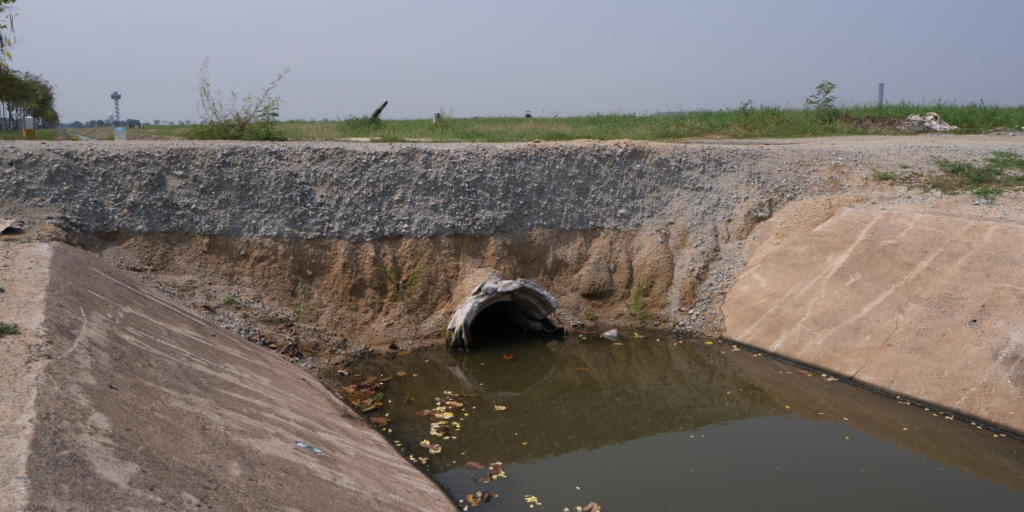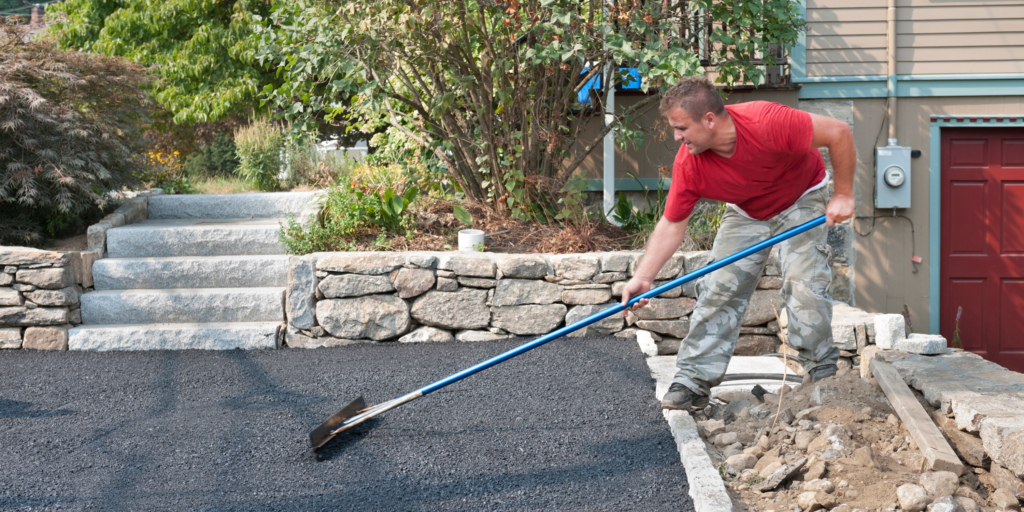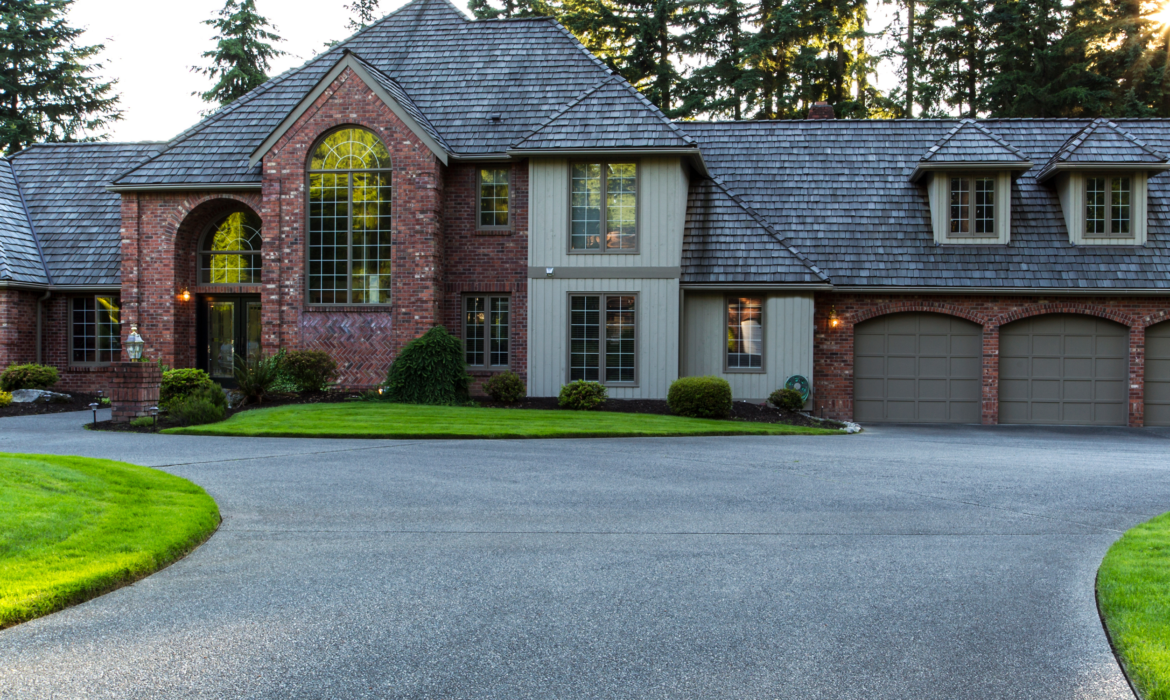Imagine coming home to a flooded driveway after a long day at work. You must park on the street and walk through ankle-deep puddles to reach your front door. Annoying, right? If driveway drainage is neglected, that can happen.
Drainage is crucial to driveway design, despite its unglamorous nature. Driveways without proper drainage can cause water damage, erosion, and structural difficulties.
What is drainage, and why is it important in driveway design?
In driveway design, drainage manages water runoff. Ensuring rainwater and other liquids don’t pool in your driveway or soak into the ground is key.
So why is this crucial? Think about it: driveways are always outside. Rain, melting snow, and even washing all generate extra water that needs to be disposed of. Without adequate drainage, that water cannot escape and sits on your driveway.
Standing water is ugly and can cause catastrophic damage. Water weight can cause asphalt, concrete fractures, and potholes. Unchecked rainwater can seep into your driveway’s layers and weaken them.
Incorporate adequate drainage systems into driveway design to avoid these difficulties. Properly built drains and channels direct excess water away from the surface and into storm drains or absorption zones.
Common Drainage Issues in Driveways
Drainage difficulties in driveways can be frustrating for homeowners. Understanding basic drainage issues is crucial, whether you have a driveway or are building one.
Poor grading is a major issue. A driveway that slopes toward your house may direct water toward your foundation, which could cause damage. Poor guttering and drainage are another issue. Without channels to divert water from the driveway, puddles may form.
Poor paver or concrete slab installation is another issue. If they are not leveled or have holes, water might seep through and erode the driveway. Tree roots can also damage driveway pavement. Poorly built drainage systems can also flood during heavy rain or snowmelt.
Addressing these difficulties during driveway design is essential to avoid them. Good grading, drains, and gutters will move water away from your home and protect sensitive sections. Maintaining drains by clearing debris and fixing cracks will immediately help them drain properly.
Addressing driveway drainage concerns early on protects your investment, improves curb appeal, and keeps pedestrians and motorists safe. Don’t forget this crucial factor when planning or maintaining your driveway!

Factors to Consider for Proper Drainage in Driveway Design
Drainage is essential when planning a driveway to prevent water damage and prolong its life. Consider these factors:
1. Slope and Gradient: The driveway slope helps divert water away from the surface. The driveway should have a gradual incline to encourage runoff rather than pooling.
2. Surface Materials: Water permeability varies by substance. Gravel and permeable pavers assist with draining, although concrete may need drainage channels.
3. Rainwater Collection: Use rain gardens or catch basins in your driveway design to collect rainwater and prevent it from running off.
4. Gutters and downspouts: Position gutters and downspouts to drain roof runoff away from the driveway, reducing excessive water collection during heavy rainfall.
5. Drainage Channels: If your driveway collects a lot of water, drainage channels can help direct excess water to drainage outlets.
Considering these elements during design can help you develop a practical and lasting driveway that handles water flow without compromising integrity or creating damage.
Solutions for Improving Drainage in Existing Driveways
There are various techniques to improve driveway drainage. Installing a French drain around the driveway is one option. This requires digging a trench, lining it with gravel and perforated pipe, then covering it with soil or gravel. French drains divert driveway water and prevent pooling.
A driveway swale or ditch is another possibility. Excavate a shallow trench close to the pavement to channel water. The addition of pebbles or plants can improve usefulness and appearance. If your driveway has low regions where water collects, add compacted gravel or asphalt. This will help water drain properly and not pool.
If an inadequate slope causes drainage concerns, regrading the driveway may be essential. The surface must be reshaped to slope away from structures and toward drainage points. Before making any changes, consult driveway design and maintenance experts. They will evaluate your driveway drainage and provide the best solution.
Designing a New Driveway with Proper Drainage in Mind
Proper drainage is essential when planning a new driveway. Your gorgeous new driveway could become a pond during heavy rains or snowmelt without it. How do you ensure your new driveway drains well?
The driveway slope comes first. A good driveway should have a slight slope to direct water to drainage basins. This avoids pooling and pavement damage. Adding permeable materials to your driveway design improves drainage. Water runs through permeable pavers or gravel. This lowers runoff and replenishes groundwater.
Catch basins or drains along your driveway’s perimeter are also important. These features catch excess water and guide it away from garages and foundation walls. These drains are placed carefully for effective evacuation without sacrificing aesthetics.
Optimizing results requires consulting with a driveway and drainage system expert. To design a drainage solution that works for your property, they can evaluate soil composition and climate.

Benefits of Proper Drainage in Driveway Design
Proper drainage in driveway design has many benefits beyond water prevention. Effective driveway drainage preserves surface integrity and longevity. Good drainage prevents erosion. Poor drainage can cause driveway water to soak into the ground and damage the soil. Over time, this can cause sinkholes or uneven surfaces that are ugly and dangerous.
An appropriate drainage system prevents water from flowing toward your home’s foundation. This is especially crucial for sloped driveways. You can prevent basement flooding and structural damage by channeling water away from your property. Proper drainage reduces slip and fall incidents from standing water or ice in winter and protects your property. It speeds up driveway drying after rain or snowmelt, making it safer for pedestrians and cars.
Maintaining proper drainage also improves driveway aesthetics. A well-maintained façade might be marred by water stains and puddles. Maintain a clean driveway year-round with adequate drainage systems. Proper driveway design with adequate drainage systems prevents erosion, protects foundations, and improves safety.
Conclusion
Driveway drainage is often underestimated but essential. Neglecting this crucial component can cause water pooling, erosion, and driveway damage. By considering the following aspects and improving drainage in existing driveways or constructing new ones with proper drainage in mind, homeowners may ensure a functional and attractive driveway that lasts.
Remember that driveway design is about water flow as well as vehicle comfort. Don’t forget drainage when remodeling or building a driveway.
Professional experience and effective drainage solutions will improve your driveway’s operation and longevity while preventing future issues. Be sure to examine your situation or consult specialists before starting a driveway project.
If you consider drainage during design or handle existing issues quickly, you can save costly repairs and enjoy the peace of mind that precipitation won’t damage your home!

